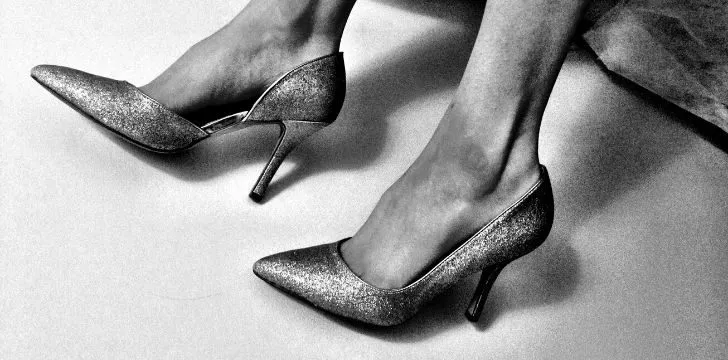Did you know that women in the 1700’s used high heels as a way to make their feet appear smaller? High heels are now a staple piece in man
Did you know that women in the 1700’s used high heels as a way to make their feet appear smaller?

High heels are now a staple piece in many women’s wardrobe. They are worn to elongate legs, dress up an outfit, and even give the illusion that a woman is taller than she actually is.
Heels come in all shapes and sizes and though they may often be regarded as uncomfortable, are undeniably present in modern day society.
How did the high heel first make its way into a women’s wardrobe?

The high heel did not originate to be worn by women as they are now, but rather as a man’s shoe.
They were most popular with kings and other noble and wealthy men long before they were ever adorned on women’s feet.
One common theory is that high heels were developed as a method of straddling stirrups for equestrians.
Cowboy boots today still have low heels allowing for better stability.
In previous centuries, the heel allowed men to stand up in their stirrups and better utilize their weapons during war.
Heels used for this purpose date back to the Persian Empire in the 10th century.
Please accept cookies to access this content
When did women start wearing heels?

Women did not begin wearing heels until the mid-1500’s. The first recorded high heel on a woman was worn by Catherine de Medici.
Previous to this, woman had only worn platform shoes.
Particularly found around the Venice area of Italy, these platform shoes were called “chopines” and often, but not exclusively, worn by prostitutes.
Historical accounts also place their wear and height by members of nobility with some of these platforms as high as 20 inches tall.
Their purpose was born for utility, both allowing women to grow their stature as well as protect feet and hemlines from the muddy streets of Venice.
King Louis XIV re-popularized the high heel during his reign in the late 1600’s and early 1700’s.
He was known to wear red heeled shoes, a design feature now most well associated with and trademarked by Christian Louboutin shoes.
Men wore high heels around this time not only as a wealth and status symbol but also to feel more powerful as the heels allow them to tower over others.
Please accept cookies to access this content
The evolution of heels.

Women in the 1700’s used high heels as a way to make their feet appear smaller.
The beauty standard of the time was that women were seen as more beautiful with smaller feet.
Fashion trends involved long, floor-length skirts and dresses at the time which covered most of their feet while wearing heels allowing women to appear to have smaller feet than they would while wearing flat shoes.
Until the end of World War II heels were known to be chunkier.
The 1940’s and 1950’s saw the increased stability of the heel.
Wartime technology helped popularize the modern day stiletto heel during this time by allowing fabricators to utilize their metal in heels. The use of steel allowed the shapes of heels to change.
High heels could now be thinner than they were previously, as before this time heels were generally made of wood so they could not be as thin as many of the heels we see today while still supporting the weight of a woman.
Throughout the decades heels have evolved to fit different occasions and styles.
With fashion trends changing from season to season, the high heel is a closet staple that has truly stood the test of time.
